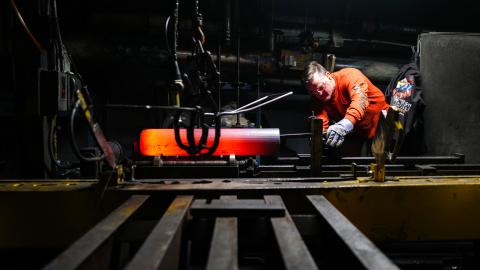The 2018 Winter Olympics have just come to a close, and with markedly different results than would have been imagined 30 years ago. Then, the Soviet Union and its Communist satellite East Germany won the largest amount of Olympic medals. So, when the Soviet Union collapsed in 1991-2, the 18 independent countries that emerged from the wreckage were bequeathed the remnants of the Soviet Union’s vaunted and formidable sports champion production system. Products of that system continued to win championships and World Cups and Olympic medals for their newly independent countries, some in spectacular fashion. 1994 saw Ukrainian Oksana Baiul win gold in women’s figure skating upsetting the American favorite Nancy Kerrigan. Oksana Chusovitina competed in gymnastics for Uzbekistan from 1993 to 2006 and again from 2012-2016.
Since their independence, some post-Soviet countries have chosen to focus their athletic endeavors on those sports that have a national following, while others have put state dollars towards sports that they consider to be prestigious. Ukraine, the most populous of the former, non-Russian republics inherited a strong athletic training system, with special high schools for promising youngsters and talented coaches. But Ukraine’s Olympic Committee has been reluctant—or unable—to support the athletes who have emerged from this system.
So Ukrainian athletes have increasingly gone elsewhere. Just take a look at the 2018 Winter Olympic figure skating teams. While Ukraine has put forward entries in men’s, women’s, and ice dancing, many of its athletes have defected to other countries. Aliona Savchenko, who competed for Ukraine until 2002, won a gold medal in pairs figure skating for Germany in PyeongChang. Alisa Agafonova, from Kharkiv, Ukraine, now skates pairs for Turkey, while fellow Kharkiv denizen Maksim Spodyriev competes for Poland in ice dancing. For its part, Israel recruited a trio of under-supported Ukrainians for its skating team: Oleksiy Bychenko skated in the men’s singles, Yevgeniy Krasnopolski performed in doubles figure skating, and Adel Tankova was part of an ice dancing team. It is then no surprise that Anita Östlund, who was born in Odessa, Ukraine, to a Ukrainian mother and Swedish father, has chosen the support of Sweden’s Olympic Committee over Ukraine’s.
Ukraine’s professional athletes have followed many hundreds of thousands of their compatriots who have also given up and left their country since independence in search of work and support elsewhere. For so many talented Ukrainians, the potential to make a clean, professional living has proven too difficult in their home country, so they have moved abroad in search of opportunity, normalcy, and prosperity.
It is likely that few of these Ukrainians will return. Yet, if Ukraine is to stabilize and prosper, it must find ways to stop this drain of talent and hope. Ukraine and the international donors who support her must develop strategies and implement programs to encourage the country’s youth to see their future in the country of their birth. Otherwise, confronted with corruption, a lack of good, secure jobs, and poor social services, promising young Ukrainians will do the same as did the figure skaters and find opportunity—and reward—elsewhere.















